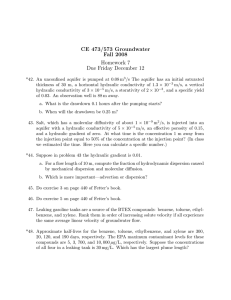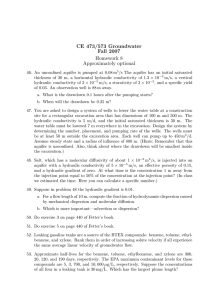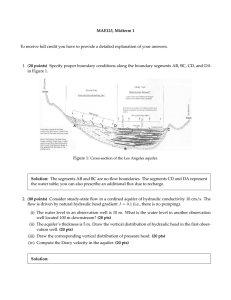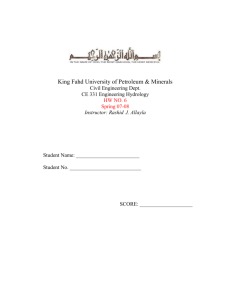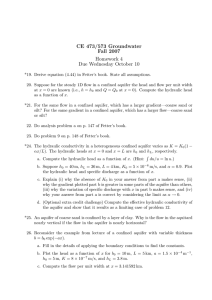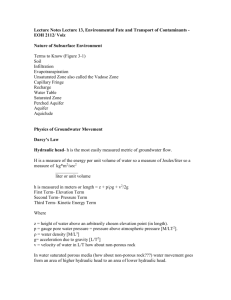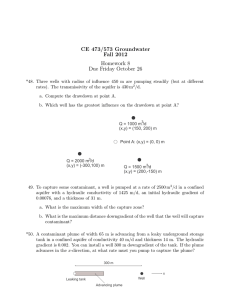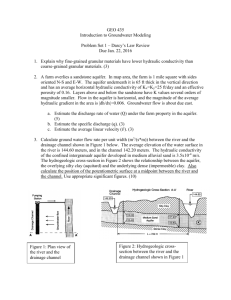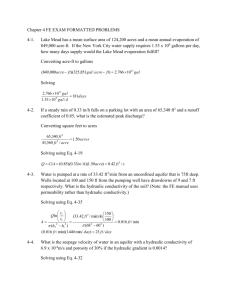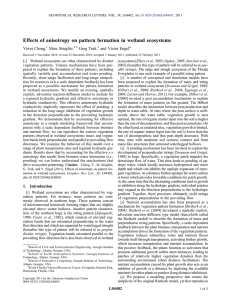CE 473/573 Groundwater Fall 2009 Homework 7 Due Friday December 11
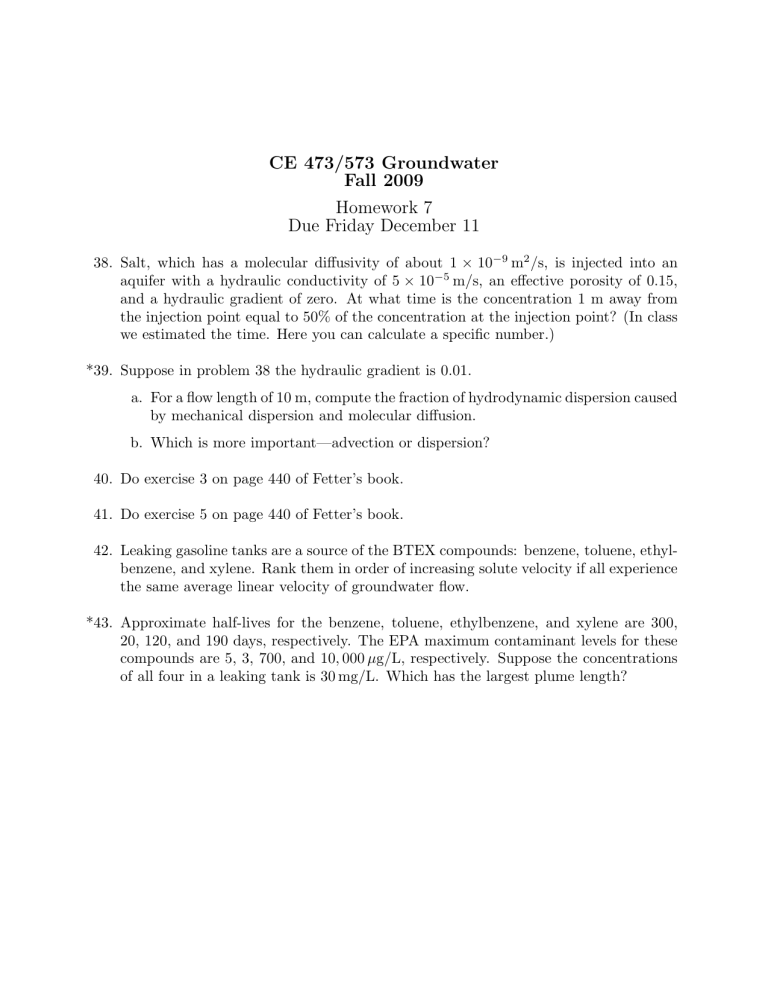
CE 473/573 Groundwater
Fall 2009
Homework 7
Due Friday December 11
38. Salt, which has a molecular diffusivity of about 1
×
10
−
9 aquifer with a hydraulic conductivity of 5
×
10
−
5 m / m 2 / s, is injected into an s, an effective porosity of 0 .
15, and a hydraulic gradient of zero. At what time is the concentration 1 m away from the injection point equal to 50% of the concentration at the injection point? (In class we estimated the time. Here you can calculate a specific number.)
*39. Suppose in problem 38 the hydraulic gradient is 0.01.
a. For a flow length of 10 m, compute the fraction of hydrodynamic dispersion caused by mechanical dispersion and molecular diffusion.
b. Which is more important—advection or dispersion?
40. Do exercise 3 on page 440 of Fetter’s book.
41. Do exercise 5 on page 440 of Fetter’s book.
42. Leaking gasoline tanks are a source of the BTEX compounds: benzene, toluene, ethylbenzene, and xylene. Rank them in order of increasing solute velocity if all experience the same average linear velocity of groundwater flow.
*43. Approximate half-lives for the benzene, toluene, ethylbenzene, and xylene are 300,
20, 120, and 190 days, respectively. The EPA maximum contaminant levels for these compounds are 5, 3, 700, and 10 , 000 µ g / L, respectively. Suppose the concentrations of all four in a leaking tank is 30 mg / L. Which has the largest plume length?
*44. (Old exam problem) A manufacturing plant has been leaking 1,1-dichloroethane into a confined aquifer of thickness 13 m since the 1960s. The aquifer has hydraulic conductivity 5 m / d, effective porosity 21%, soil organic carbon content 0.4%, bulk density
2 .
4 g / cm 3 , and hydraulic gradient with a magnitude of 0.01. Studies nearby show the dispersivity to be about 5 m. The contaminant 1,1-dichloroethane has a solubility of
5500 ppm, a half-life of about 110 days, a value of K oc contaminant level (MCL) of 7 µ g / L.
of 45 mL/g, and a maximum a. If the concentration of 1,1-dichloroethane at the source of the leak is 25 mg/L, how long is the plume—that is, how far downgradient is the concentration above the MCL?
b. A well is to be installed so that the contaminated water can be pumped and treated. However, it cannot be placed downgradient of the source because of a parking lot. If it is placed 50 m upgradient of the source, what flowrate would you recommend using?
c. Would the required flowrate from part b increase or decrease if the following parameters increase? Briefly explain why.
i. Half-life ii. Soil-water partition coefficient K oc iii. Hydraulic gradient iv. Aquifer thickness v. Source concentration
Groundwater flow
Proposed well
50 m
Leak source
Building
Parking lot
